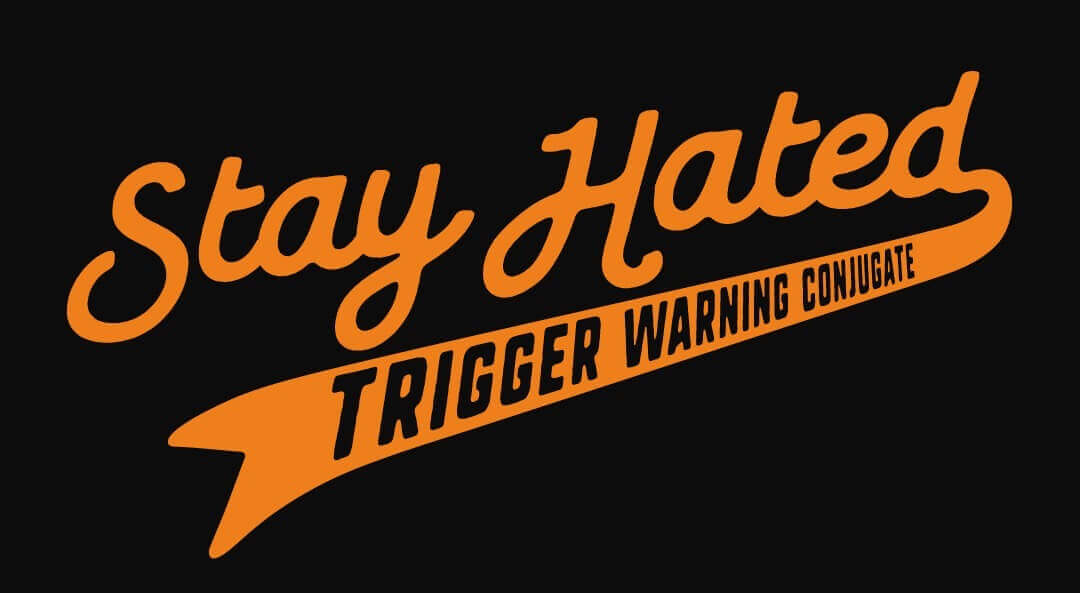
by Roman Mustaccio
@rpefml
Powerlifting is still a pretty niche sport, and gear has become a niche of that niche (whether we want to admit that to ourselves or not, numerically it is true). Because of this, gear to some has become rather esoteric and some of the details seasoned lifters take for granted are totally unknown to those who are interested in getting into it. In aim to better prepare any ply-curious lifters with no equipped mentors, here's some of the things that aren’t immediately apparent.
It's Hard
Yes, you get carryover; and most can comprehend the idea that it takes skill- but you won't understand how hard it is to get the carryovers you hear about until you're in it. You think a 300lb bench shirt carryover just happens when you buy the shirt? I wish!
No matter what the level of equipment, there's unfortunately no such thing as "free" pounds on your total. Remember- if something was easy, everyone would do it.
The Carryovers you Heard are a Lie (or at Least More Complicated)
When I got into gear, I was told squat suits and briefs added 300lbs to your squat, and poly shirts added 300lbs to your bench. I'm not sure if those numbers still float around today, but I sure believed them when I heard them. Boy was I disappointed!
Like I briefly alluded to above, it's not as easy as just putting it on.
For an example, say we have two lifters who bench 315lbs raw, but one of them is an equipped lifter who benches 615lbs in a shirt. Well, the raw lifter most likely won't bench 615lbs when he puts a shirt on. Why? Outside of technical skill, while they both bench 315lbs raw on paper, the equipped lifter has built certain muscle groups up far past the strength of his raw bench. The most obvious one is the unsupported areas, primarily being the forearms. The equipped lifter effectively has the forearms of a 600+lb bencher, while the purely raw lifter has never forced his body to adapt to such loads.
Same with the squat- you need to have the upper back and trunk built to support weights at times hundreds of pounds greater than your raw squat. This is very difficult and isn't really something you can do outside of gear, not to mention the technical changes mean you're doing so in what may be an entirely different posture than you're used to.
Within both of these lifts, the technical changes are so demanding that it's arguable if it's even fair to consider them extensions of the raw lifts and not simply entirely different movements. I don't know any lifters who, if pursuing the biggest raw lifts they could hit, would lift exactly like they would in gear- you'd be trying to lean into support and hit grooves that aren't there!
It's Not Stretchy
One misconception I had was that gear would be more elastic. Especially because people talk about poly gear being "stretchy." However, when I got my first pair of briefs they felt about as stretchy as my leather belt. It was quite the rude awakening
The thing is, yes the material ends up stretching; but only under load. Unless its canvas, which does not stretch at all (hence people use it for "stopping power").
I think this misconception comes mostly from slingshots or other bench bands as this is the only exposure most have to any kind of gear nowadays outside of sleeves and belts, or maybe wraps.
It Hurts
Maybe your belt left bruises and your knee sleeves ripped your leg hair out. Other than that, not much in raw really hurts other than really aggressive wraps (which you still have to deal with in gear).
Nothing can prepare you for the pressure you're going to experience in real, modern, tight ass gear. It's an absolute head rush, and usually at the bottom of the squat or on the chest in the bench you totally lose your vision and your head feels like it's about to explode. It's also a big shock to many what weights that much over your raw lifts feel like to hold or put on your back. It's not very pleasant, and it's especially tough when the postural musculature hasn't yet caught up to what the gear lets you move.
Bites
This one scared the shit out of me the first time I wore a bench shirt. Nobody really told me about bites, probably because after a while you just stop noticing them and they get lesser and lesser.
Essentially, when you wear really tight or aggressive gear, it leaves a bunch of little bruises where the gear is tightest and moves the most. Sometimes they look like light bruising, sometimes they're really heavy bruising in a tiger-stripe-like-pattern, and sometimes it outright cuts you open.
Thankfully this isn't anything to worry about, and while the first time it's pretty wild; as you keep going you bruise less and less (if at all).
Blown Blood Vessels
Like bites, this is a wildly apparent side effect of gear. It's a result of the pressure, and will leave you looking a few shades darker for a day or two. Sometimes you might also blow out blood vessels in your eye, on your upper chest, or bleed out of your face if you have an enlarged pore.
Unlike bites, your body doesn't get as adapted to this one.
Getting Technical vs Strong
This one is part of where gear starts to warp the legitimacy of the term "strength sport." At times, your raw lifts can stagnate or even go down; but your equipped lifts will go up.
Largely, you just needed to get stronger in other places complimentary to the gear and they aren't necessarily the same places you need to better to get your raw lifts up. The other facet is that the gear is (arguably) stronger than you- and by this what I really mean is that it will benefit you more to lean into the groove of the gear than it will to try and muscle fuck weights up. If you get out of the groove, it is likely you won't be able to salvage the lift no matter how strong you are raw.
This isn't to say you can get away with being outright weak and still put up numbers, as the gear only adds on to what you can do. But it is simply more important to learn the gear than it is to drive your raw lifts up like crazy.
Two Steps Forward, One Step Back
Get ready to set your ego aside a lot. Again, this shit is difficult. Often to get past a barrier, you will have to make a sweeping technical change requiring you to either get out of gear, push a different accessory, or just stay away from bigger weights for a little while you re-pattern a lift. It sucks, but at times it is necessary.
Obviously this is a case-by-case basis for each individual and each lift, but be mentally prepared to go through stretches of feeling like everything is going backwards. The heading for this might even be an understatement, sometimes it feels as if you're taking a hundred steps backwards just to take half a step forwards. It's almost like recovering from a surgery, you feel neutered in your abilities for what feels like an eternity with only the hope of resuming normal activity after. It sucks, but being able to get through those periods can be what separates the good from the great.
New Gear is the Worst Gear
This one surprised me, because I thought gear would break-in to your body like a baseball glove. Granted, some gear does; but especially in the beginning it just makes things a million times more difficult if you have to learn gear while simultaneously breaking it in.
When you get the basics down, you can adjust with the gear as it breaks in. The reason new gear break-in is so disastrous for new lifters is you don't even know what anything should feel like yet, whether it be fit or groove or pressure. More less do you understand why you like what you like, or how things should be for you in particular to perform at your best.
I looked at gear in the beginning like a car, if you want the most life out of it you have to get it new and ride it till the wheels fall off. Fortunately, the reality is that there are a hell of a lot of ways to squeeze more life out of gear if need be. Whether it be getting old stretchy gear tightened, having the stitching cleaned up, support patches in wear places, or Frankenstein-ing two pieces of old gear together; some gear today can truly last a lifter their whole career.
New gear is also harder to use, and this isn't a good thing. You need to be able to touch and hit depth to get through a meet. While I get it's a nice ego boost to say a weight that sounds big in your head is "too light" to touch in your shirt, the reality is having ranges of touchable weights will save your ass more times than not.
As a brief guideline- canvas does not stretch ever, so as long as a canvas suit isn't actively ripping it will be good as long as it fits well, some briefs wear out but not all, modern poly suits are damn near canvas at this point so they're largely always good, and shirts are usually the main thing people have to replace as they stretch out or rip the easiest (but there are exceptions to this).
Alterations (and All Sizing) is an Expensive Dice Roll
Thankfully you won't be dealing with this too often, but it's still a pain when you do have to go through it.
Every company has different sizing, tolerances, and materials. No two are the same to order from, and the accuracy of their sizing advice can be questionable at best and downright wrong and unreliable at worst. Your best bet is to talk to someone who ordered gear from a certain company RECENTLY, and gauge how you should measure from there. When buying used, start with finding someone in your weight class, then exchange measurements from there.
As for alterations, if you have a good seamstress locally that will be your best bet. Thankfully there are also some independent alterers, and all but one equipment manufacturer I can think of does alterations in house. However, it isn't cheap to get gear altered, it usually takes longer than they tell you it will, and sometimes you get gear back and it still doesn't fit. It's frustrating, yes; but if you really need something altered, try to ask someone who is around you often for their opinion and/or measure to the best of your abilities. It doesn't have to be as perfect as you think it does, especially in the beginning.
The Whole Market is Slow
Being an Amazon Prime member, I am spoiled by two-day shipping in every other facet of my life. Do not carry this expectation into anything relating to gear.
I've had equipment take almost a year from date of payment to delivery.
The only exceptions to this are if you order secondhand or through a retail partner who has the gear in-stock. Anything made to order is going to take its sweet old time getting to you.
I write this not to scare any lifters getting into gear, but to prepare them. These are just some of the things I wish I had someone able to convey to me when I first got into gear. Good luck on your journey into the deep end!



